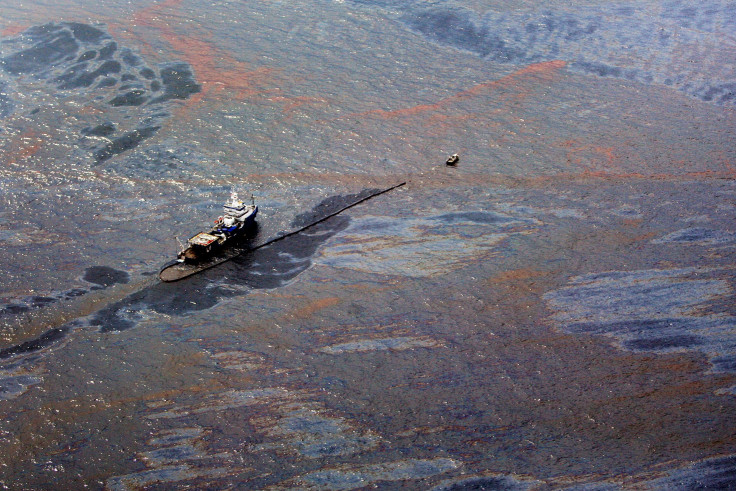BP Says Gulf Of Mexico Recovering From 2010 Oil Spill, But Federal Scientists Dispute Company's Claims

Federal scientists are disputing statements by BP PLC that U.S. Gulf Coast ecosystems are recovering well from the 2010 Deepwater Horizon disaster. Government officials and environmental groups said late Monday that the effects of the multimillion-barrel oil spill are likely to last “for generations,” according to media reports.
BP released its environmental recovery and restoration report Monday, a month before the five-year anniversary of the disaster. An explosion on the Deepwater Horizon drilling rig killed 11 workers and sent at least 3.2 million barrels into Gulf waters -- the worst offshore oil spill in American history -- destroying fisheries, coastal habitats and eco-tourism ventures from Florida to Texas.
"Areas that were affected are recovering and data BP has collected and analyzed to date do not indicate a significant long-term impact to the population of any Gulf species," Laura Folse, BP's executive vice president for response and environmental restoration, said in a note introducing the report.
“The Gulf is showing strong signs of environmental recovery, primarily due to its natural resilience and the unprecedented response and cleanup efforts,” she later told the UPI news agency.
The BP report cited federal, academic and industry studies conducted as part of the spill response, as well as the ongoing Natural Resource Damage Assessment (NRDA) process, which aims to scientifically determine damages caused by the spill. BP said that, to date, NRDA scientists have conducted more than 240 studies, and BP has spent about $1.3 billion to cover costs associated with the research. The company has also forked over about $700 million for 54 restoration projects in Alabama, Florida, Louisiana, Mississippi and Texas.
“The hard work of tens of thousands of people -- both inside and outside of BP -- has resulted in significant progress toward understanding the accident’s environmental impact, cleaning the shoreline and restoring the Gulf,” according to BP.

The U.S. National Oceanic and Atmospheric Administration (NOAA), which is involved in the response effort, quickly rebutted BP’s report. The agency said the energy company “misinterprets and misapplies” data and findings regarding the extent of damage to the regional environment.
“The state and federal trustees, including our scientific colleagues at universities and institutions around the Gulf, are engaged in a rigorous, scientific process of injury assessment and are still analyzing the data, conducting studies and evaluating what happened,” NOAA said in a statement to reporters. “From decades of experience with oil spills, we know that the environmental effects of this spill are likely to last for generations.”
Kyle Graham, executive director of Louisiana’s Coastal Protection and Restoration Authority, said BP’s report “is grossly premature and has a very narrow point of view, and they have clearly cherry-picked the data and information they’d like to discuss,” the Times-Picayune newspaper reported.
The dispute over the Gulf region’s environmental recovery comes amid an ongoing legal battle over the extent of the 2010 oil spill. The federal government on Saturday appealed a federal court ruling that set the size of the spill at 3.19 million barrels -- a decision that means BP faces a maximum fine of nearly $14 billion under the Clean Water Act. U.S. officials had estimated the size of the spill at 4.09 million barrels, which would raise BP’s maximum fine to $17.6 billion.
BP has set aside $3.5 billion to cover penalties related to the Clean Water Act. So far, the company has incurred more than $42 billion in costs for the spill, including for cleanup and compensation for victims. Only about 810,000 barrels of oil were collected following the accident.
© Copyright IBTimes 2024. All rights reserved.











